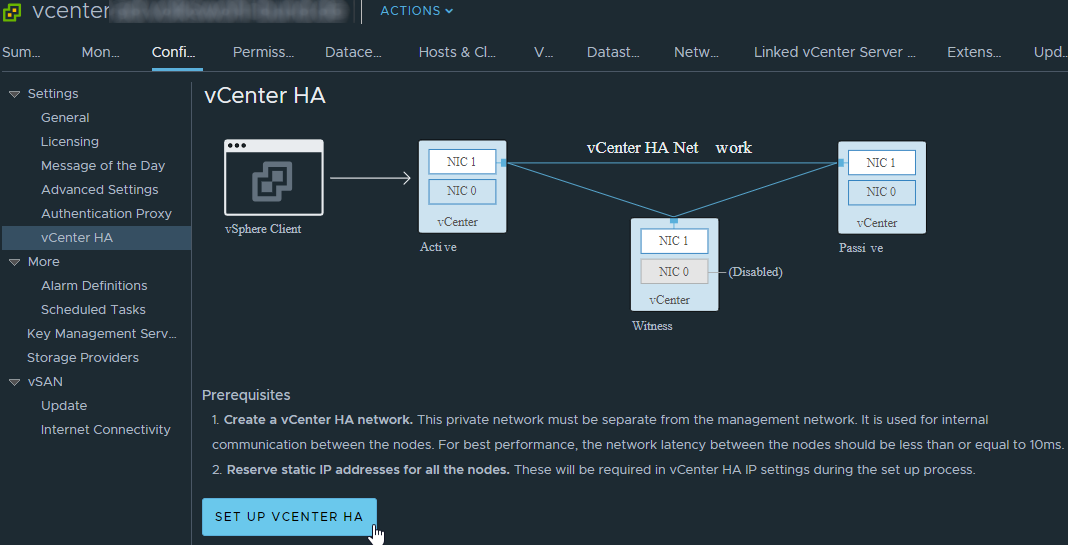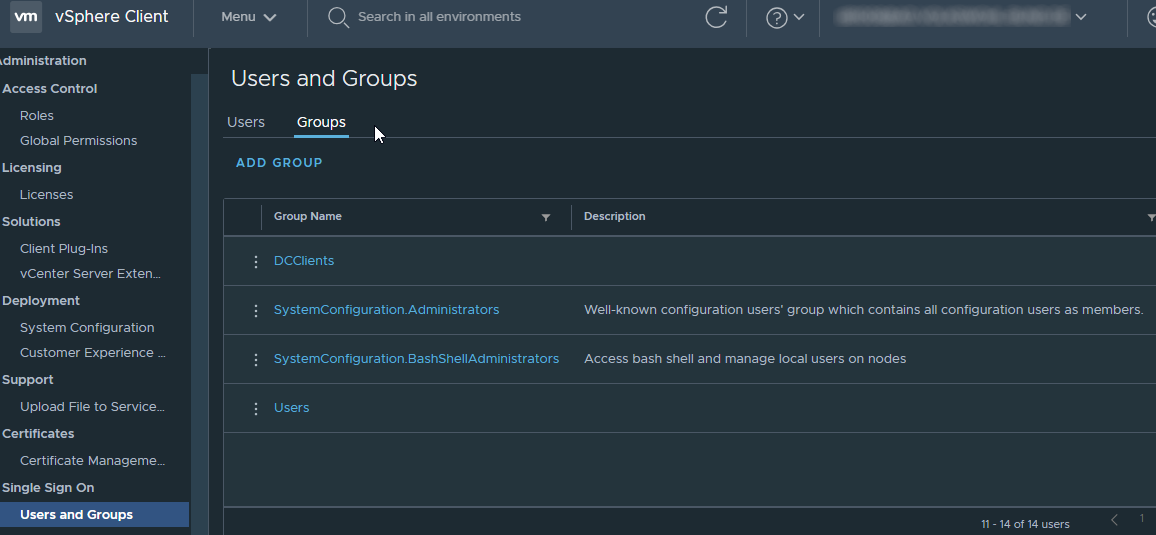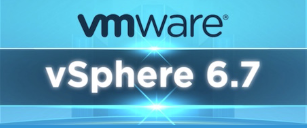On October 16th VMware released the Update 1 for VMware vSphere 6.7. It is not only a new Update with some new features and bugfixes.
Finally the HTML5 Client is fully featured. You don’t have to switch between Flex and HTML5 Client to get all administrative tasks you have to do.
In this article I want to show some of the new features and enhancements.
vSphere Client
The first thing everyone will notice are the new respectively functional completed features in the HTML5 based vSphere Client.
I want to pick some of the features which were updated or added to the vSphere Client
- Dark Theme
- vSphere Update Manager
- Cluster Quickstart
- Improved Searching
- vCenter High Availability (VCHA)
- vSphere Health
- Appliance Management
Dark Theme
You can now switch to the new dark theme. You will get a banner will notice you that not all plugins or feature sites will render the dark mode correctly.


vSphere Update Manager
All ESXi, driver and firmware update functions moved to the vSphere Update Manager. These function previously were handled by the Configuration Assist workflow.

vSphere Update Manager supports the use of OEM vendor ISOs. Isolated networks could be updated by adding updates with new workflows.
Cluster Quickstart

With Cluster Quickstart the initial deployment is a task of some minutes. Also existing clusters could be expanded in seconds. Now it is possible to bulk insert new ESXi host.

The following tasks now also can be done with Cluster Quickstart
- Cluster services including vSphere HA, vSphere DRS, and vSAN
- Adding hosts – Add multiple hosts simultaneously
- vSAN deployment type
- Network configuration including vSphere Distributed Switching
- Disk Group configuration
- Data Services like Deduplication & Compression / Encryption
Improved Searching
With the new search you can find objects in your environment by using strings and filter based attributes.

The search includes Tags, Custom Attributes or power state and many more.
You can now save recuring search queries. Saved queries could be found in the global search bar.


vCenter High Availability (VCHA)
vCenter High Availability was introduced with vSphere 6.5. VMware made the workflow easier by merging the process to one workflow. In three steps the configuration is made.

- vSphere SSO credentials for either management vCenter Server or management credentials
- Resource settings for the Passive and Witness nodes including compute, storage, and network
- IP Settings for the Passive and Witness nodes
vSphere Health
In my opinion the feature with one of the most power. With enabled CEIP vCenter Server will sent telemetry data to VMware’s analytics cloud. The data is anonymous and no workload data will be sent. vSphere Health will provide KBs for solving problems you may have not recognized yet.
This service will functionally grow and will add more and more services which will be monitored.
Appliance Management
The VAMI get one new Tab – Firewall. Now it is possible to manage firewall rules directly from the VAMI. This was only possible only via VAMI APIs before.

VAMI now supports login with SSO user account. To login to the VAMI the user must be member of SystemConfiguration.Administrators group.
To access bash shell the user must be in SystemConfiguration.BashShell.Administrators group.

Conclusion
VMware vSphere 6.7 Update 1 is a big step forward. If you didn’t upgrade to vSphere 6.7 yet, now you should start planning the upgrade.
Think about all dependencies within your VMware products but also 3rd party products like backup software and so on!
Releated documents
VMware vCenter Server 6.7 Update 1 Release Notes
VMware ESXi 6.7 Update 1 Release Notes







